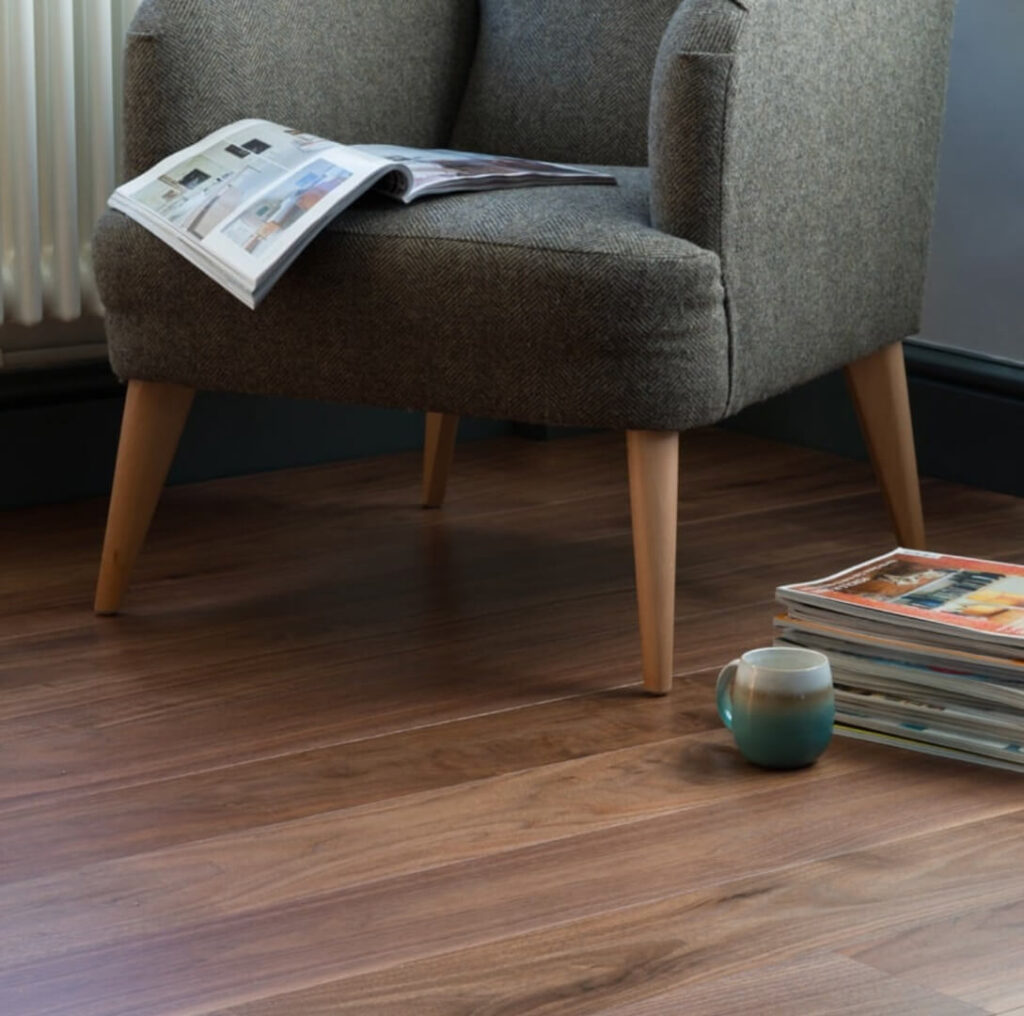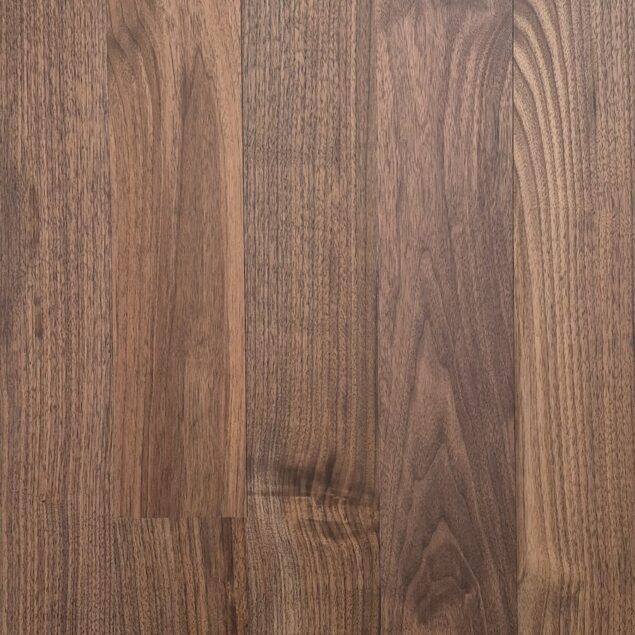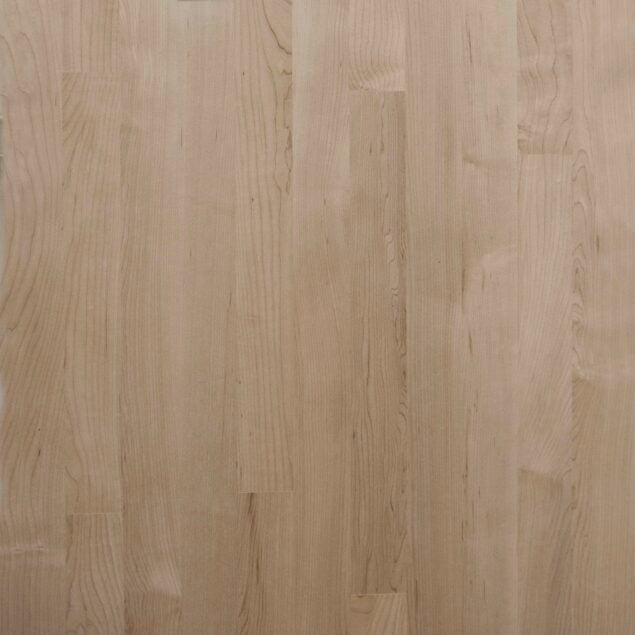Flooring, November 7, 2025
What Is Engineered Flooring, and How Does It Differ from Solid Wood?
When beginning a flooring project, many homeowners ask the same question: What is engineered flooring, and how does it differ from solid wood? Both solid wood and engineered wood are popular choices for creating beautiful, durable, and timeless floors, but their construction, performance, and suitability for different rooms vary. Understanding the key differences between engineered and solid wood helps homeowners make informed decisions that will suit both their property and their personal preferences.

What Is Solid Wood Flooring?
Solid hardwood flooring is crafted from a single piece of timber. Solid wood planks are cut from the same type of timber species, whether oak, walnut or another hardwood, and offer the timeless beauty of real wood throughout. Because each plank is a single piece, solid hardwood can typically be sanded and refinished multiple times, extending its lifespan and maintaining its authentic appeal.
Solid wood floors bring durability and natural character to a home, but they can be sensitive to changes in temperature and moisture. In hot rooms, bathrooms, or areas with underfloor heating systems, solid hardwood will expand and contract, which is worth noting during the installation process. Despite these limitations, many homeowners still choose solid wood for its authentic surface, environmental impact, and the long-term value it adds to a property.
What Is Engineered Flooring?
Engineered wood flooring is designed with a layered construction that combines stability with the authentic appeal of real wood. Our engineered boards are made using a cross-layered Birch ply with a veneered top layer of real wood. This top layer, known as the wear layer, gives engineered wood the same surface appearance and durability as solid wood, ensuring that the timeless beauty of oak, walnut, or other timber species is maintained.
The stable layered construction of engineered wood flooring makes it less susceptible to temperature fluctuations and moisture. This makes installing engineered wood a suitable option for most rooms in the home, including kitchens and even bathrooms. Engineered wood planks can also be used with underfloor heating systems, which is one of the main differences from solid wood. While engineered wood can often be sanded and refinished, the frequency depends on the thickness of the wear layer.
Key Differences Between Engineered and Solid Wood
The main difference between solid and engineered floors is in their construction. Solid hardwood is made from a single piece of timber, whereas engineered wood is layered, combining plywood with a top layer of real wood. This structural difference creates added stability for engineered flooring, making it more resistant to moisture and temperature changes.
Another distinction is in the installation process. Engineered wood planks are often prefinished, making them quicker to install and suitable for DIY or a professional fitter. Solid hardwood is frequently unfinished and may require sanding and sealing after installation. Engineered flooring also allows for longer planks, which can enhance the aesthetic appeal of larger rooms.
Both solid hardwood and engineered wood are exceptionally durable and hard-wearing flooring options. Each can be sanded and refinished to restore its original beauty over time, ensuring long-lasting performance and appeal when properly maintained.
Which Is Right for Your Home?
Choosing between engineered and solid wood comes down to personal taste, practical considerations, and the unique circumstances of your flooring project. Engineered wood flooring is a versatile choice for modern homes, especially in rooms with underfloor heating or fluctuating temperatures, where stability is essential. Solid wood flooring remains a classic option for those who want the authenticity of single-piece timber and the ability to refinish the floor more times over its lifespan.
Both solid and engineered floors offer timeless beauty and durability, with each flooring type adding warmth and value to your home’s interior. Homeowners should consider the installation method, maintenance needs, and the desired look of their wood floor before making a decision.
Final Thoughts
Understanding what engineered flooring is and how it differs from solid wood allows homeowners to make informed choices about their flooring project. Engineered wood flooring offers stability, suitability for underfloor heating, and ease of installation, whilst solid hardwood flooring provides unmatched authenticity and the ability to be refinished multiple times. Both options are worthwhile investments that create real wood floors with enduring appeal.
At Natural Wood Floor Company, we offer a diverse range of solid wood and engineered wood flooring, from oak and walnut to other popular timber species. With free samples and expert advice on installation, maintenance and suitability, our team helps homeowners choose the right flooring for their spaces. Whether you opt for solid hardwoods or engineered boards, our floors combine quality, style, and durability to ensure a professional finish that enhances your home for years to come.


